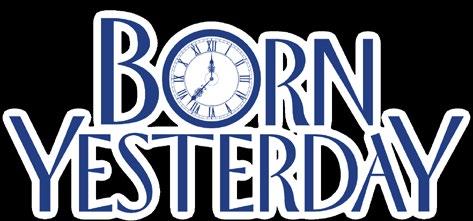




The marquee of a theatre is almost always the first thing you see when passing by or entering the lobby for a night of live performance. Throughout theatre history, bold block letters have told you exactly what is running and when, and the sign’s ethereal glow welcomes you into a world of endless possibilities.
But a marquee doesn’t tell you what the show is about, the talent and hard work that goes into a production, and the fascinating nuances that make a script come to life on stage. For this reason we are delighted to present the Maltz Jupiter Theatre’s Marquee Magazine, an in depth publication that not only showcases our upcoming season productions, but also delves into the processes of a producing regional theatre and its essential role in the community.
Within these pages you’ll find interviews with directors, designers, and artistic leaders at the Maltz Jupiter Theatre, as well as a behind-the-scenes look of our American history-packed season that will transport you to another time without leaving your seat. You’ll also get a glimpse of how the Theatre is transforming the Palm Beach County community through the power of performance.
After reading this issue of Marquee Magazine, I hope you’ll pass by our marquee and value the show titles displayed—not for their famous production history, but for the relentless work that went into creating a spectacular theatre season.
ANDREW KATO PRODUCING ARTISTIC DIRECTOR/ CHIEF EXECUTIVE
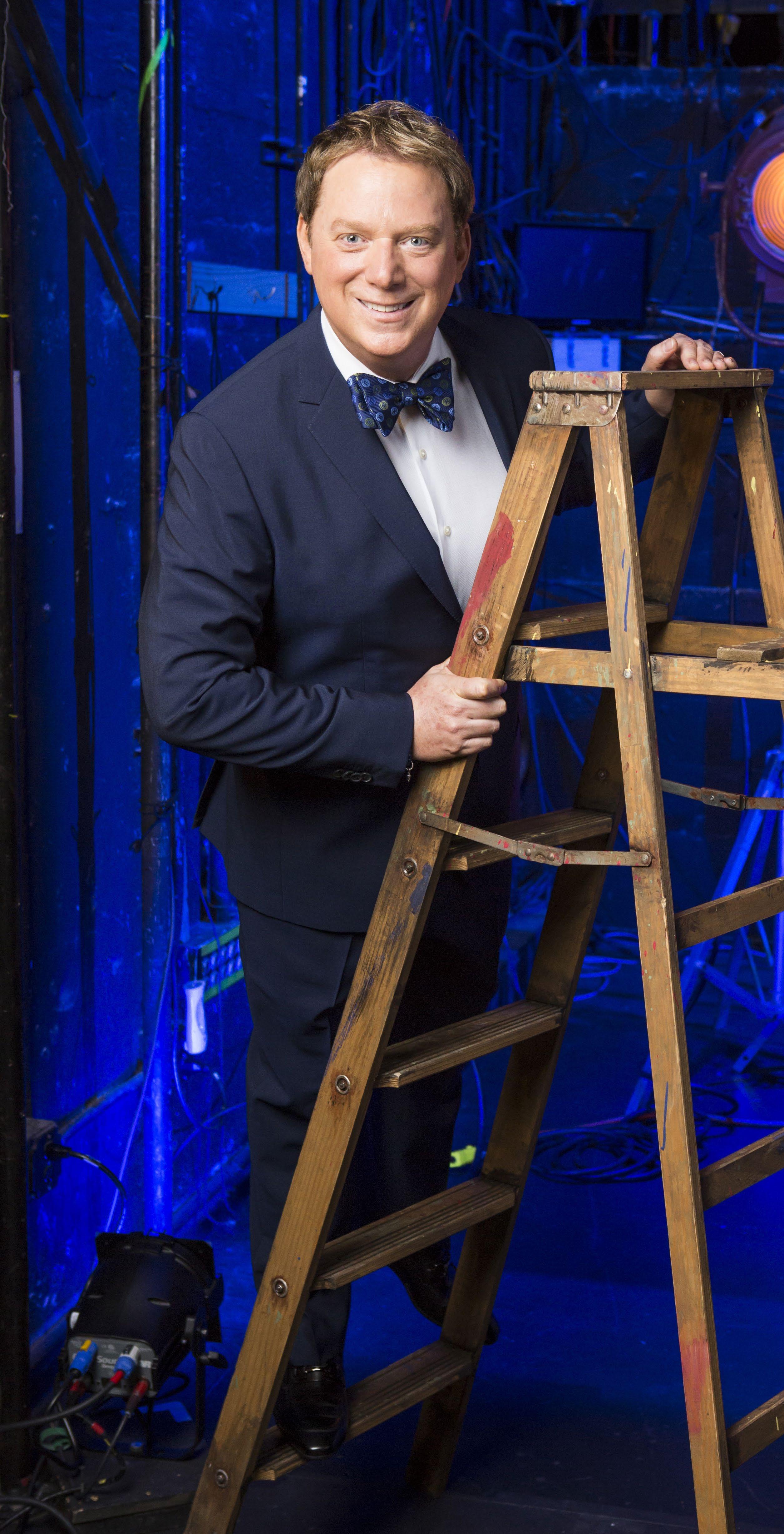

2 A Production Line 4 From Concept to Creation 6 Fashion-Forward in the Forties 8 A Striking Story 10 Welcome to the 60s! 12 The Drawing Room Drama 14 Moving Up with Director Gordon Greenburg
16 ARC New Works Festival 18 What’s in it for Us? 19 Pushing Our Boundaries 20 An Egg-cellent Opening 21 Exits and Entrances
Editor Dana Munson Design and Layout Todd Hilgert
Contributing Designer Jeff Barry
Contributing Writers Linnea Bailey, Cecilia Padilla, Kelsey Peterson
Photography Jason Nuttle, Susan Stripling
Stylists Janie Willison, Michelle Winters
Hairstylist Kacey Corino-Murphy
Costume Designers Kathleen Geldard and Joseph Sibley Choreographer David Wanstreet
Production Joei Cohan, Julieanna Novak, George Horrocks, Aileen Cleaver, Chelsea Tuffy
Printing Preferred Printing & Graphics
Special Thanks Kelsey Vintage Goods in Lake Park, FL
Andrew Kato, Producing Artistic Director/Chief Executive
Maltz Jupiter Theatre Board of Directors
Robert Sachs, Chair | Robin B. Smith, Vice Chair
Milton Maltz, Chair Emeritus | Martin Cohen, Chair Emeritus
Richard L. Barovick, Lynn Bovenizer, Eileen Daly, Debra A. Elmore, Jack Farber, Connie M. Frankino, Nancy Gilbane, Paul A. Goldner, Roberta E. Golub, Roe Green, Rodger H. Hess, Susan L. Johnson, Richard J. Katz, Jr., Brett Langbert, Tamar Maltz, Karen T. Marcus, William I. Morton, Bonnie Osher, Ralph Saltzman, W. Scott Seeley, Susan Namm Spencer, Salvatore A. Tiano, D’Vera Topol, Jeffrey P. White
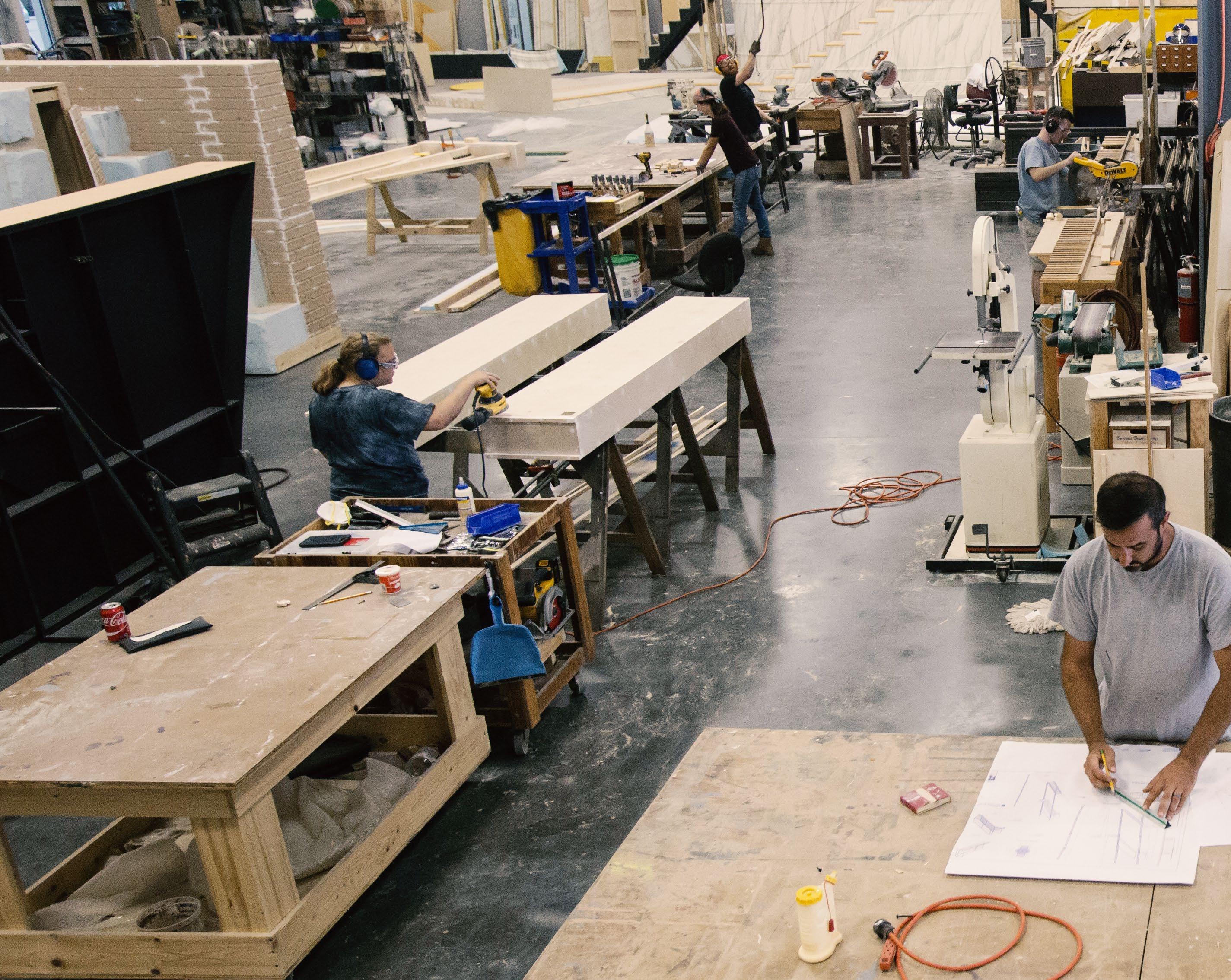
When you attend the theatre, it’s easy to get lost in a play’s plot or the music of a show. The actors’ compelling presence on stage and the music’s lovely echo across the theatre are just a few things theatergoers find alluring about live performance. But what, exactly, does it take to make the final product you see on stage?
As a producing regional theatre, the Maltz Jupiter Theatre works year round to plan, budget, and stage incredible performances and productions. Producing Artistic Director/Chief Executive Andrew Kato gave us some insight on the strategy behind choosing a theatre season. “My role,” says Kato, “is to combine art and commerce. I have to think strategically about what shows are available for production and what
that means financially for the Theatre.” Seasonality is key as well. “The order in which the shows are produced isn’t random. A family friendly musical around the holidays is always a hit, and smaller plays in between the big musicals gives us more room to economically house larger casts during rehearsals.” Before the current season even begins (six months before, to be exact), Kato is already planning the lineup for the following year and formulating the teams of designers and directors that will make the shows come to life. “The goal,” says Kato, “is to choose the best people for the job.”
Once the shows have been selected Production Manager Joei Cohan gets the ball rolling. “I’m a puppet master of sorts,” says Cohan. “I lay out the entire season almost eight months before we even see set or costume renderings. A detailed schedule of
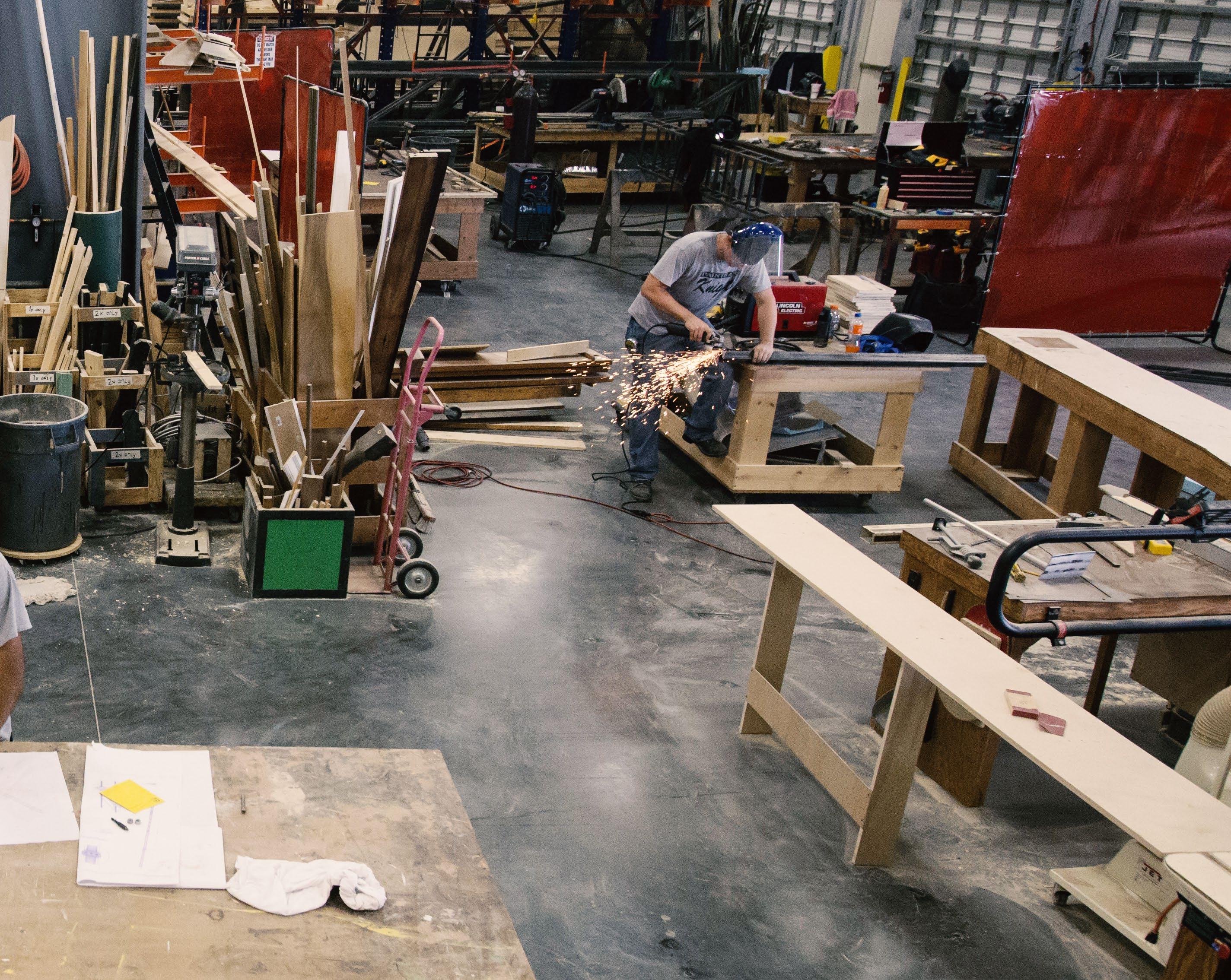
when designers arrive and how much time they need to design a set or costume is vital to a successful run.” Cohan’s planning doesn’t only apply to the opening of a production, but to the closing as well. “I give a huge amount of forethought to when it’s time to strike a show. The previous production has to wrap up flawlessly so that general theatre equipment and shared show pieces are ready and waiting for the following show’s cast and crew.”
Cohan then turns her master plan over to Technical Director John McDermott. “I get to be the liaison between the designers’ dreams and the execution of those dreams into reality,” says McDermott. “A lot of my job relies on accurate facts and figures. How much lumber do we need? How ornate is the set? How many man hours are required to build it? What kind of materials will we need? Styrofoam, wood,
The Stats
• In construction alone, over 900 man hours are put into a season show
• Between 500 to 700 actors are seen when casting the season
• Over 1,000 feet of crown molding is used on the set of Born Yesterday
• At least five different materials have been tested for the projections used in Newsies
• Props for Hairspray were ordered as far in advance as summer 2017, since shipping is backed up around the holidays
• Discussions for the set of An Inspector Calls, the fourth show of the season, began in May of 2017
• There are only three days from striking Hairspray to the first day of tech for An Inspector Calls.
cardboard, metal, or plastic? You name it, I’ve thought of it.” McDermott even has the flow of the production center down to a science. “We’ve been in the new shop for two years now and it flows like a dream. I have to be really on top of how thing are set up in there so that sets are given the attention they need with assembly line speed.”
Kato, Cohan, and McDermott are just a few of the cogs that make the Maltz Jupiter Theatre run like a well-oiled machine. From administrative staff to the smiling ushers in the lobby, it’s all hands on deck to get the production line moving.
Cecilia Padilla
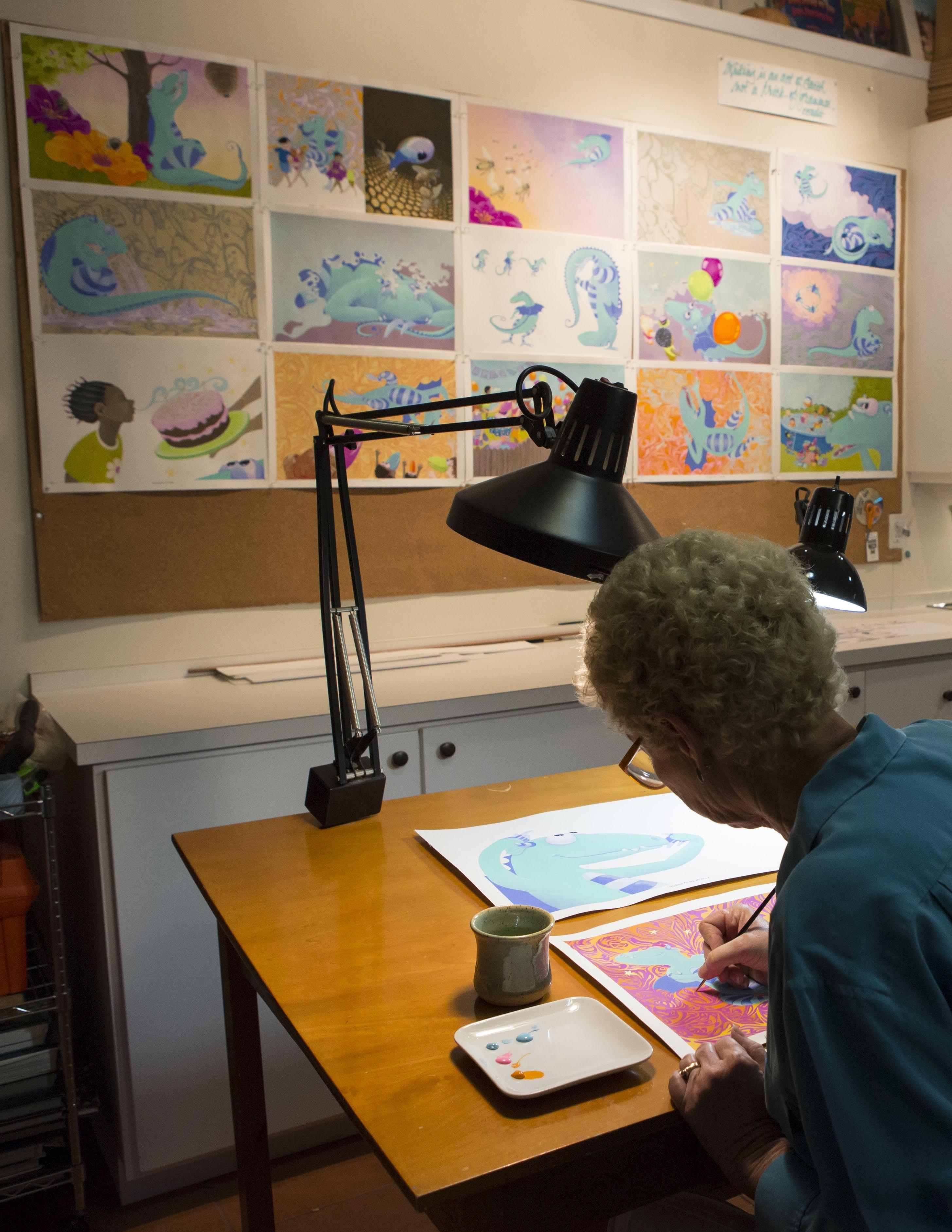
Drama Dragon is vivacious, spirited and wears their emotions on their sleeve. They are also teal, youthful and very dramatic.
Meet Drama Dragon: the energetic new mascot for the Maltz Jupiter Theatre Goldner Conservatory of Performing Arts.
But they’re not just any mascot. Drama Dragon is a creature created specifically for students in grades K-2 designed to help young people embrace all of their feelings in a positive way. Whether happy, sad or angry, Drama Dragon shows children that all emotions are valid and worth working through.
Funded by the Maltz Jupiter Theatre endowment created by Milton and Tamar Maltz, Drama Dragon is a longstanding dream of the Theatre’s Producing Artistic Director and Chief Executive Andrew Kato. Drama Dragon is a vibrant, imaginative costumed character that will star in their own storybook, appear at opening nights and public events, and bring joy to all ages.
The mascot is the creation of a dynamic team of South Florida artists who collaborated to make this vision a reality. Renowned author and illustrator Janeen Mason (author and illustrator of the national award-winning Ocean Commotion book series) spent months sketching out Drama Dragon’s likeness, followed by a 32-page full-color storybook. Using a mixed media technique, Mason used acrylic gloss and colored pencils to achieve Drama Dragon’s perfect “look.”
The team enlisted writer and
performer Riley Roam (co-owner of the children’s theater company, Page Turner Adventures, and Storyology Studios) to write the accompanying story about Drama Dragon’s dilemmas. The result is a colorful children’s book that will be distributed free to local schools, with future plans for a touring mini-musical and book sequels also in the works.
A mascot company in Canada spent the summer building a costumed character to match Mason’s illustrations. A script of movements has been prepared for Drama Dragon by Julie Rowe, Director of Education at the Maltz Jupiter Theatre.
“Sometimes Drama Dragon will wear a tuxedo; other times a swimsuit or a dress,” says Rowe. “The goal is to provide a fun-loving role model with whom everyone can identify. We all have feelings, and it’s okay to express our emotions. It’s what we do with them that counts.”
Drama Dragon will make his debut at the October 27 Circle of Friends event at the Theatre. For more information about the event, visit www.jupitertheatre.org or call: 561-743-6124
Linnea Bailey
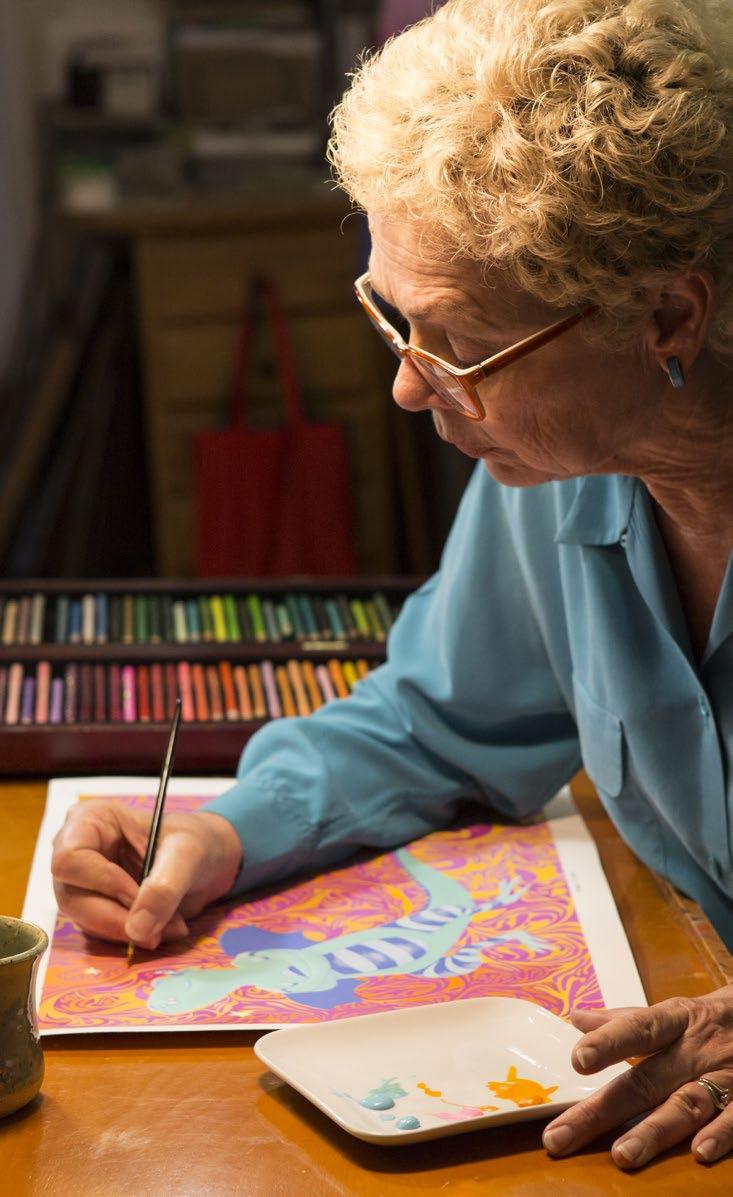


A peek into the costume design of Born Yesterday
An American comedy written by Garson Kanin, Born Yesterday tells the story of corrupt tycoon, Harry Brock, and his voluptuous blonde bombshell girlfriend, Billie Dawn, and their schemes to climb Washington D.C.’s social ladder. The more Harry rubs elbows with the city’s powerful politicians, the more he realizes his girlfriend could use some classing-up from showgirl to First Lady.
Capturing Billie’s transformation on stage is the Tony Award and Emmy Awardwinning costume designer, Franne Lee. Franne’s work has been seen in many Broadway productions including the Tony Award-winning Sweeny Todd and Candide, as well as the early years of Saturday Night Live where she
created the famous looks for the Bees, the Coneheads, the Blues Brothers, the Nerds, Emily Litella, and Roseanne Roseannadanna. And that’s not to mention her impressive film credits including Baby It’s You, One Trick Pony, and Chinese Coffee—just to name a few.
We met with Franne to crack open the world of high fashion in Born Yesterday.
Born Yesterday takes place in 1946. Can you place the fashion into context for us in regards to the time period?
The play takes place one year after the end of World War II. So a lot of the everyday fashion is influenced by military uniforms and utilitarian fabrics. When the war began, industries that manufactured fabrics and clothing transitioned into military
contracts to make uniforms. The people employed by these companies either focused their skills making military garb or they joined the armed forces themselves as doctors, nurses, military personnel, etc. This meant there was less fabric to spare for civilian fashion and less people making clothing. The play, set in 1946, reflects the moment in time when the fashion industry began to prosper again.
How does this translate to the costumes on stage?
As the 40s progressed, fabrics became more readily available and people started to cover up more than they did in the 30s. For example, men’s suits were boxy with big collars and in muted colors. In the play, the Senator’s character is an older man so he
might wear a single-breasted suit with three buttons, a throwback to earlier years. Whereas Harry Brock, the young go-getter, would probably wear a double-breasted suit with much more bravado.
Will you be attempting to transform Billie Dawn as she becomes more educated?
Since the show is written with comic sensibilities, Billie is very much the stereotype of the voluptuous showgirl. Her transformation from beginning to end is definitely illustrated through the clothes she wears. In the beginning, I want Billie to show more skin—something synonymous with showgirls. I see her wearing a red suit, maybe with leopard fur accents. This will not only make the actress stand out on stage but translate Billie’s personality as a bold, saucy woman.
As time goes on, Billie changes into a sophisticated dress because she was told to change—in her appearance and personality. The dress is less revealing and she wears gloves, a huge accessory that signify class and sophistication. Again, as more fabric was available the more women wore.
What kind of research did you do in preparation for the show’s design?
I have many period books that I use for research and I happen to have found these old 1940s Sunday magazine sections from The Chicago Tribune. There’s a wonderful picture I used as inspiration of a woman wearing
gloves with jewelry displayed on the outside of them—something which was very popular in the late 40s. This captures the essence of Billie’s sophisticated look. At the same time, however, long gloves with jewelry are comical in a way.
People used to dress up when receiving company or going out. It’s out of place in our world today, and so it gives us a good laugh when Billie doesn’t quite know how to wear fancy clothes either!
Cecilia Padilla
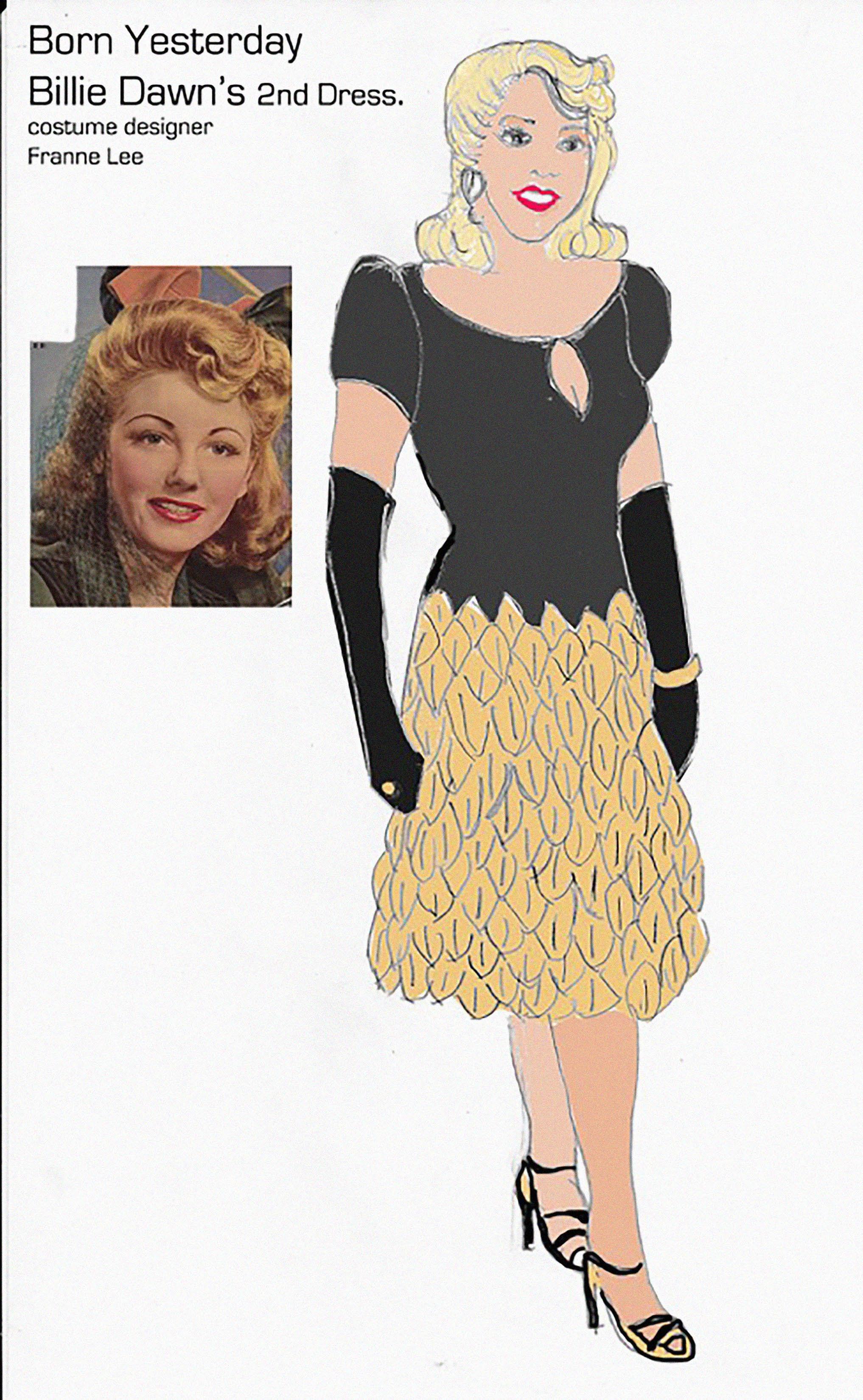
Since its inception, Broadway has had an affinity for musicals and dramas based on historical events—Les Misérables, Evita, and Miss Saigon are just a few examples. With the recent success of Lin-Manuel Miranda’s Hamilton: An American Musical, American history has a stronger relevancy to the performing arts now more than ever. It’s vibrant cast filled with rebellious youth echoes a similar sentiment in that of another musical that calls us to seize the day: Disney Newsies. Based on the real-life 1899 New York paperboy strike, Disney Newsies tells the story of the youth who struggle to sell newspapers in order to survive.
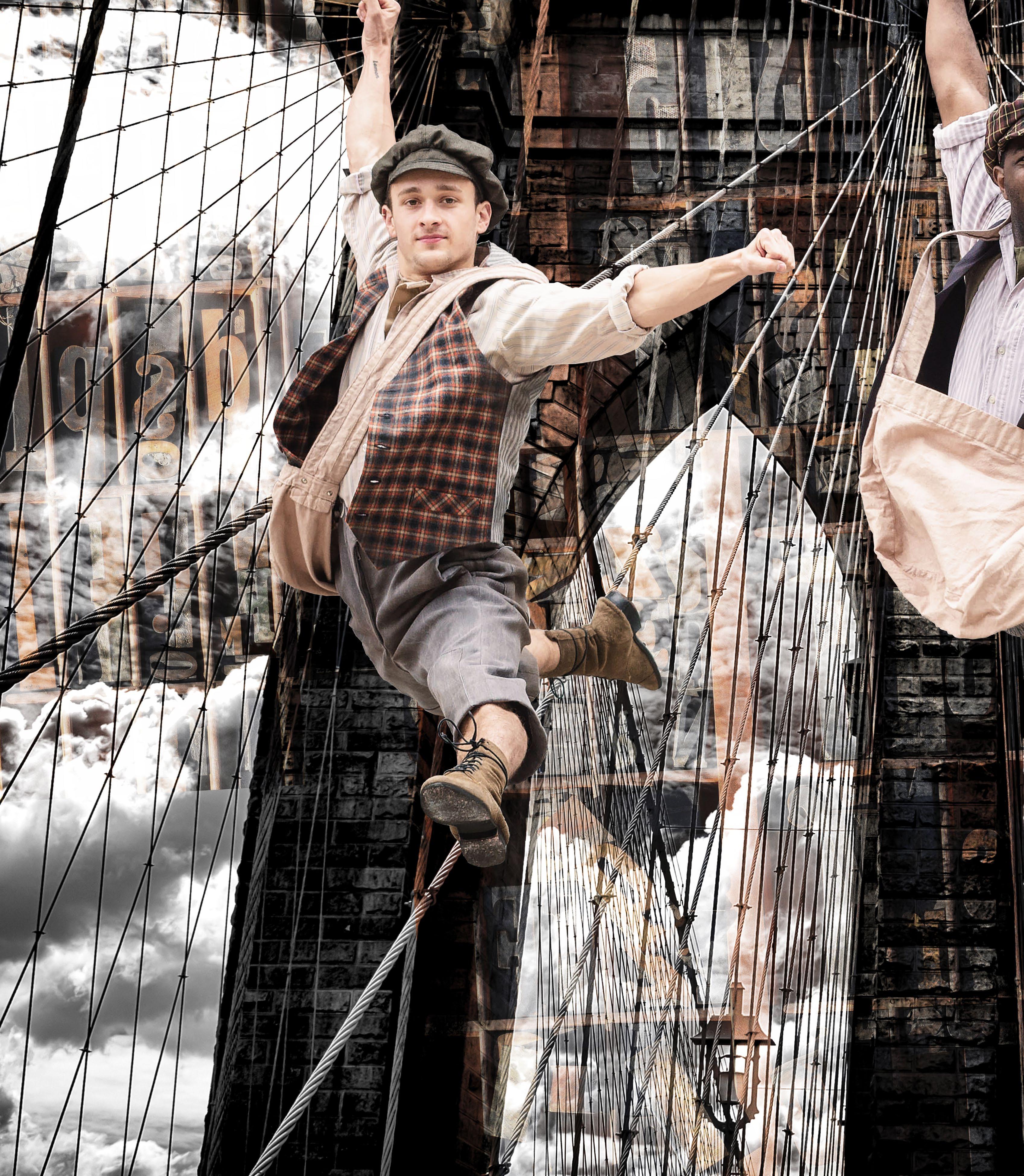
By the end of the 19th century, the American newspaper became an institution of great power and influence. Local newspapers were the primary source of information on the outside world and current events happening at home. In the 1890s, especially, newspapers moved away from political and religious affiliations tailored to the American elite, and focused on appealing to the common man. This was a movement generated by two major newspaper publishers—Joseph Pulitzer of The New York World and William Randolph Hearst of The New York Journal.
The rivalry between Pulitzer and Hearst was apparent the moment an opportunity to publish breaking news arose. Determined to outdo his competition in both sales and headlines, Pulitzer hired a team of specialized editors to generate sensational headlines to draw in new readers. By the late 1800s, the publishers were at the center of a huge circulation war that yielded the most famous headlines of what would later be known as Yellow Journalism.
Pulitzer’s and Hearst’s renown as the most widely circulated publishers was based largely on the exploitation of newsboys. Newsboys, often orphans, made a living by
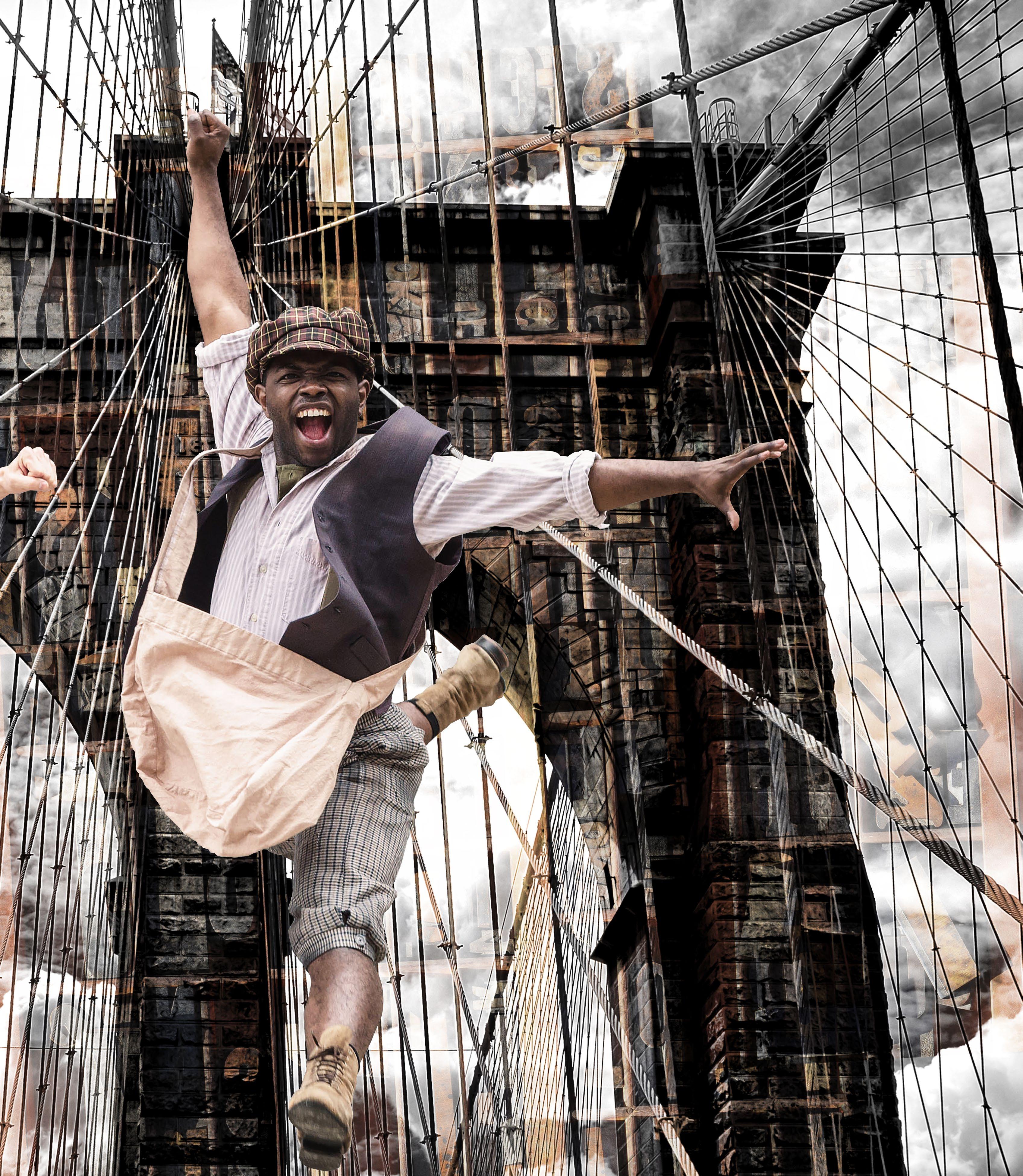
buying a stack of 100 newspapers from printing companies for 65 cents and then selling them on the street for a penny each. These boys built intricate paper routs that traversed the length of Manhattan, dominating the newspaper circuit. Despite being orphans, the newsboys lived and worked together as a family, even developing their own slang and street culture. In 1898, the outbreak of the SpanishAmerican War sent journalists into a frenzy printing the latest in war developments. Pulitzer and Hearst saw this as an opportunity to sell papers at a premium and raised the prices to 85 cents a stack. At the time, child labor laws didn’t exist to protect the young from being overworked or underpaid, and the most taken advantage of were orphan children. Newsboys—left with no other choice but to accept the price increase— buckled under the pressure to sell enough papers just to buy food, let alone save enough to buy more papers for the week. Newsboys had hoped that once the war ended, prices would return to normal, but they remained astronomically high the following year.
In the summer of 1899, newsboys all over Manhattan boycotted The New York World and The New York Journal. However, it wasn’t enough to sell smaller, lesser known newspapers over Pulitzer’s and Hearst’s more famous publications. Instead, they organized a strike that paralyzed the distribution of New York’s largest newspapers for two weeks. The strike expanded across the Brooklyn Bridge for several days, causing a massive block in New York City traffic. The protest drew over 5,000 newsboys to Manhattan and rallies were held all over the city complete with passionate speeches and acts of civil disobedience. But after two weeks of striking, little had changed. Pulitzer and Hearst decided to end the chaos by settling on a compromise; they would not lower the price of newspapers, but they would buy back any newspapers the boys didn’t sell at the end of the workday.
The newsboy strike of 1899 would leave a lasting impact on American history. Because the strike drew attention to the working conditions of newsboys, it also led to the investigation of child working conditions in other industries. The implementation of child labor laws would reform the United States in the years to come, eventually leading to the prohibition of children in the workforce all together. Not only did the newsboy strike of 1899 exemplify the tactics and the effectiveness of the early labor unions, it also embodied the workingman’s unbreakable spirit when united for a greater cause.
Cecilia Padilla
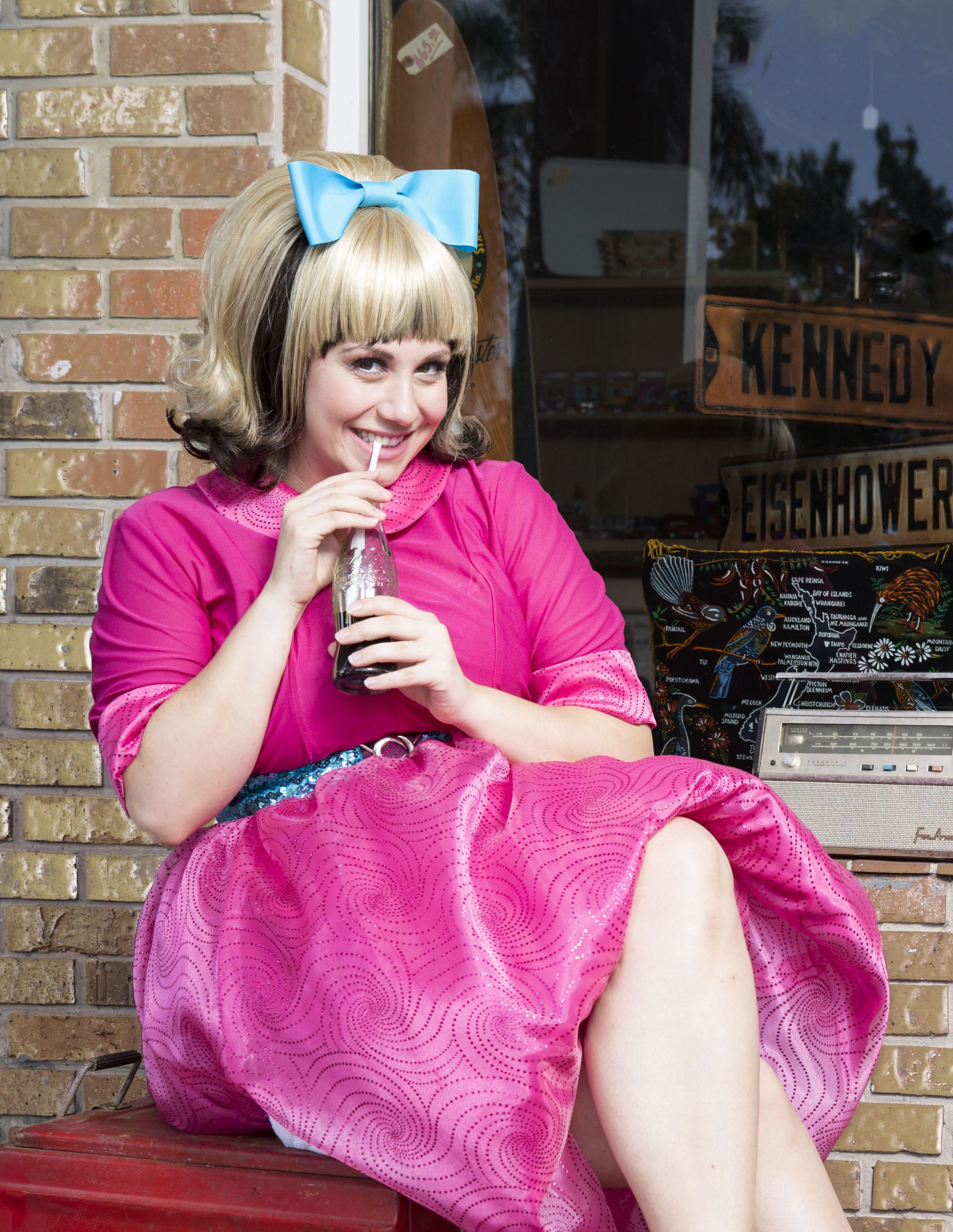
While some women felt bigger was better, others rebelled against length completely. Model Lesley Lawson, better known as Twiggy, styled her hair in a sleek, smooth, and boyish cut. This featured a deep part and long side bangs.
To get this look, women teased their hair into a conical shape and secured its style with hairspray. The Beehive was made popular by the musical group, The Ronettes.
Made popular by First Lady, Jackie Kennedy, the flipped bob was an elegant twist on straight hair. The hair was teased at the crown of the head and usually clipped back behind the ears. The remaining locks were flipped out to either side of the head with a slight curl at the bottom.

When we think of the 1960s, we think of The Beatles, Brigitte Bardot, The Supremes, and the perfectly perched pillbox hats sported by the then First Lady, Jackie Kennedy. What makes these 60s icons stick in our minds is more than just their music, movies, and good works—it’s their daring ‘dos!
The 1960s was an era marked by a counterculture revolution. Skirts were shorter, colors were brighter, and hair (especially) was higher. While the civil rights movement was in full swing, challenging social norms became the new norm, and hair became a symbolic representation of social change. Women opted for short, masculine cuts and men grew their hair to their shoulders, or longer.


The one thing every “‘do” absolutely relied on for impeccable shape and all-day hold was hairspray. Originally invented in the 1940s, hairspray reached peak popularity in the 60s to give volume and texture to those sky-high hairstyles. The product is so synonymous with the 1960s that film director John Waters wrote and directed a movie about the era and titled it “Hairspray”. The movie premiered in 1988, another era marked with voluminous locks, and later inspired the 2002 Broadway musical.
Cecilia Padilla

When it comes to those hardhitting dramas that demand an acute intellect and discerning eye, the Maltz Jupiter Theatre turns to veteran Director J. Barry Lewis. Lewis has a long history at the Theatre directing shows such as Disgraced, Frost/Nixon, Glen Garry Glen Ross, Dial M for Murder, and Doubt. For the 2017/18 Season he is taking on the task of directing An Inspector Calls, a drama about a family who must confront their secrets as their past is brought to light. We spoke to Lewis to get some insight on the social themes in this psychological thriller.
What is the historical context of An Inspector Calls?
J.B. Priestly wrote An Inspector Calls in 1945, just barely at the end of World War II. When you put it in historical context, Priestly was writing from a time when many artists were posing criticisms about the disruptive and destructive nature of capitalism. But the brilliance of this play is that these heavy themes are embodied in entertainment. Ultimately, theatre is a springboard that is both entertaining and makes a statement about the world, and Priestly accomplished this through mystery and revelation.
How would you describe the artistic style and themes of this drama?
An Inspector Calls was written in a very popular style of the mid1930s to 1940s called a “drawing room drama.” This meant it was usually a one-set play with a fixed amount of characters, and it dealt with specific social issues that made discussion accessible. Priestly, and many other writers, found a correlation between the capitalistic nature of society and the hypocrisy of the Victorian and Edwardian era. People presented themselves in high manners—they put on airs—but at the root of it, they lacked the substance to act on their supposed generosity.
What about An Inspector Calls remains entertaining and relevant?
This play is considered to be one of the finest of the drawing room drama style. It was produced countless times in the 1950s; movies were made in Hollywood; productions were mounted around the world. Drawing room plays remain relevant because they portray everyday people— like you and me—at their worst. We’re removed from the situation, but we learn from the characters’ mistakes. We’re not only dealing with a play about capitalism, but we’re also looking at the role of the individual and their responsibility to their fellow man. The spine of the play is very much so “I am my brother’s keeper,” a theme that is significant now more than ever.
What makes this play a psychological thriller?
We have the opportunity to explore a heightened style of storytelling in this production. The moment when the family reaches peak crisis—the boiling point—they begin to disintegrate psychologically. The Inspector’s accusations are not only challenging the family’s selfperception, but the audience’s perception of the characters as well. Before the Inspector arrives, we have built our own image of the family based on what they’ve presented to us. But when the curtain is pulled away, we discover that the truth has been distorted by our own assumptions.
Cecilia Padilla
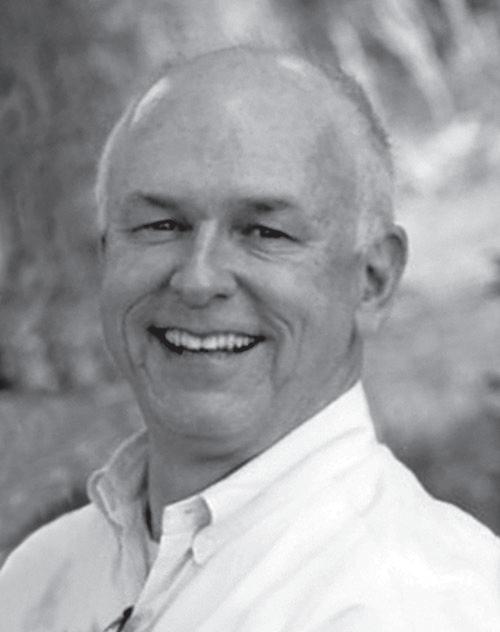
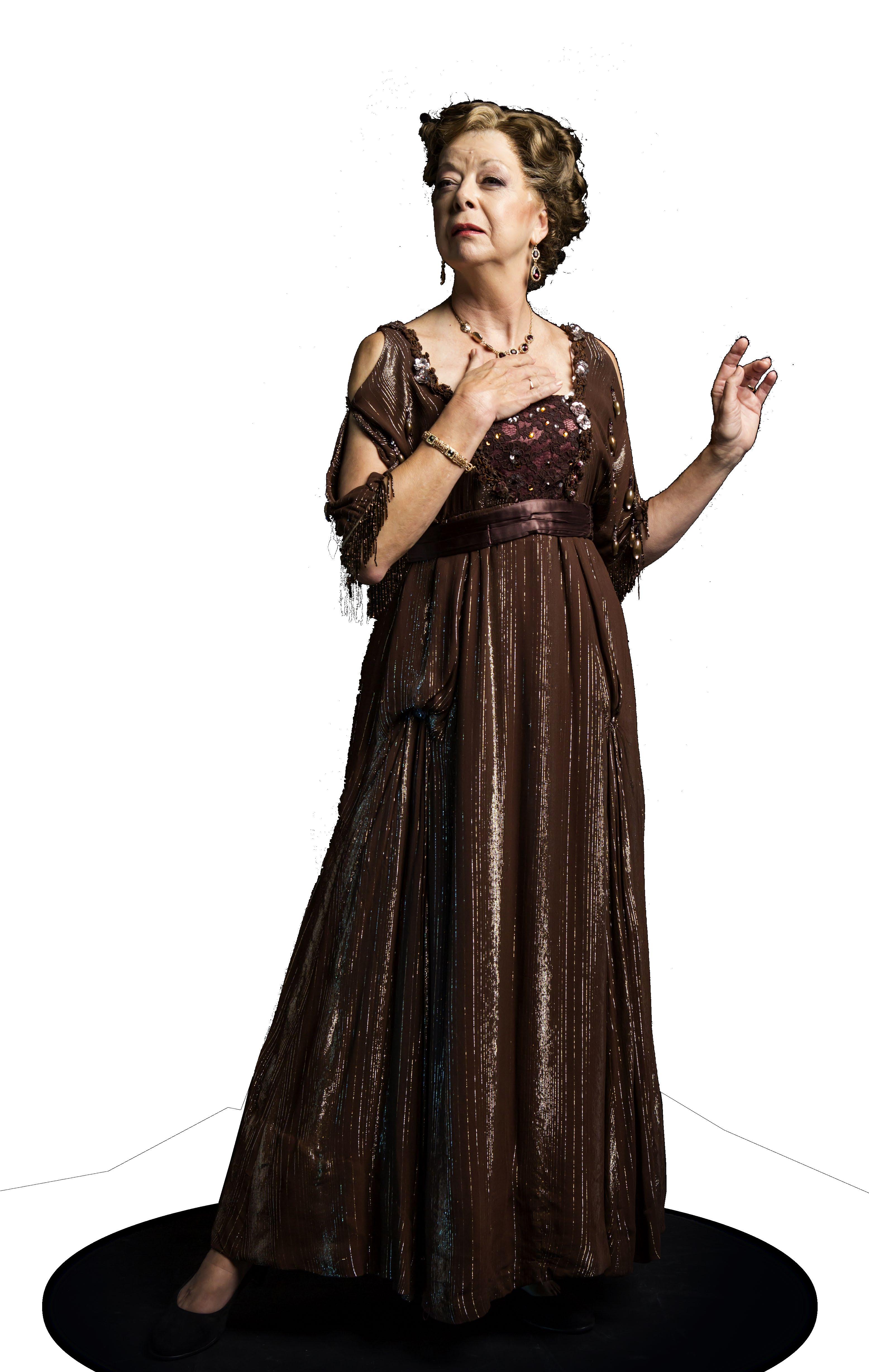
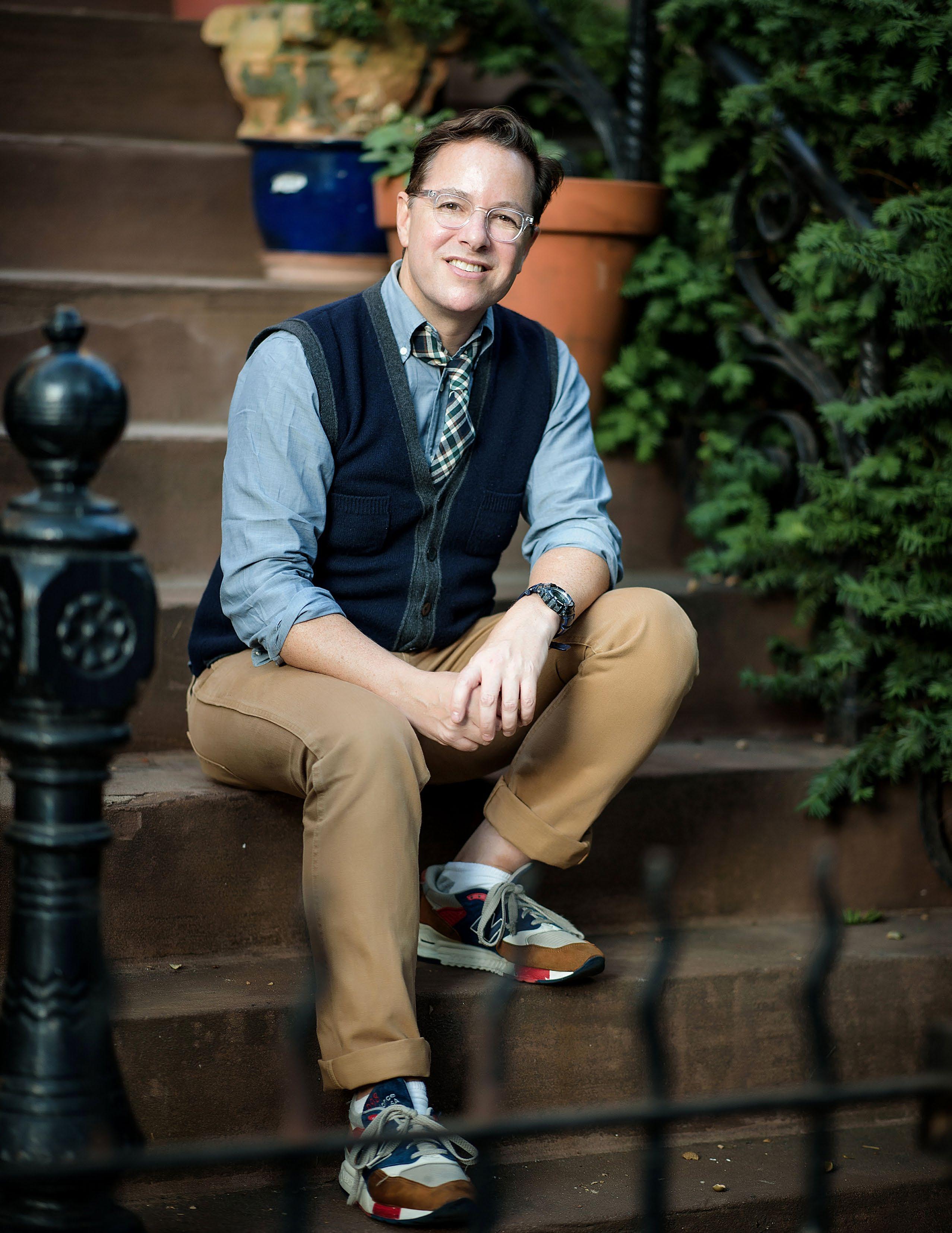
South Pacific’s director reflects on his successful career and returning to the Maltz Jupiter Theatre.
Director and writer Gordon Greenberg is ecstatic to return to the Maltz Jupiter Theatre this spring to direct the Theatre’s production of South Pacific Greenberg, who directed the Theatre’s critically-acclaimed hit production of Barnum in 2009, has certainly been busy.
Based in New York, Greenberg has directed over 100 plays and musicals at major theatres across America and Europe, written for television and stage, and is Artistic Associate at The New Group in New York. Last season, Greenberg co-wrote and directed the Broadway stage adaptation of Irving Berlin’s Holiday Inn at Studio 54 for Roundabout Theatre Company and Universal Pictures Stage Productions. His acclaimed West End revival of Guys and Dolls was nominated for six Olivier Awards and recently finished an extended run, and he collaborated with Stephen Schwartz and LinManuel Miranda to direct and adapt the Drama Desk Award winning production of Working
at 59 E 59 in New York, Broadway Playhouse in Chicago and the Old Globe in San Diego.
“Since I was seven years old, I was obsessed with being on Broadway. I suppose it’s good to have certainty about what you want to do, even if this is the most challenging industry on the planet,” he chuckled.
Greenberg is no stranger to Broadway. Born in Texas and raised in New York, Greenberg performed in his first Broadway show at age 12. He attended Stanford University and NYU Film School before joining J. Walter Thompson Worldwide for a stint as a producer and director of commercials. He then moved back into theatre—first performing on Broadway and on television and soon directing and writing.
“Working on Broadway is definitely more challenging when you have to do homework at night,” he says. “Once I began writing and directing, it became a whole new level of investment when a production is entirely resting on your shoulders. But it’s also a huge opportunity to create a world that people can step into for a few hours that may somehow make their lives better.”
And Greenberg isn’t the only Maltz Jupiter Theatre alumnus on South Pacific’s creative team. The show’s choreographer, Connor Gallagher (seen onstage in the Theatre’s production of The Boy Friend), has now become a major player on the national stage. Gallagher recently won the 2016 Astaire Award for Best OffBroadway Choreography for The Robber Bridegroom, and previously choreographed Greenberg’s production of Disney’s Tangled for Disney Cruise Lines, among other projects.
While planning is already underway with the creative team, they both can’t wait to begin working with the cast in Jupiter.
“South Pacific is one of the greatest musicals ever written,” says Greenberg. “It’s a show that is both nostalgic and shockingly contemporary and human. It’s a testament to the musical’s staying power to see how it continues to resonate with audiences, 70 years later.”
Linnea Bailey


Application Pending By
Andy Sandberg
Captiva and Coral Gables By Chris
Demos Brown
Three Points of Contact
A New American Musical by Ryan Scott Oliver
10 Minute Musicals By Various Student Playwrights
1001 Nights
Music and Lyrics by John Mercurio
Book by Kenneth Allan Vega
Conceived and Developed by Andrew Kato
The Maltz Jupiter Theater presents its first new works theatre festival
After thirteen seasons of producing well-known musicals and plays, the Maltz Jupiter Theatre is ready to enter the world of new work development. “Regional theatres,” says Producing Artistic Director/Chief Executive Andrew Kato, “have the responsibility to contribute to the national landscape of new works.” Thanks to the fully-funded endowment generously created by Milton and Tamar Maltz and countless other loyal donors, the Theatre will be able to present new theatrical pieces through the first annual ARC New Works Theatre Festival this April.
As an integral part of the Theatre’s mission to “educate, entertain, and inspire,” the ARC New Works Theatre Festival will focus on taking audiences through the processes of creating a new work. “Our festival,” explains Kato, “will encompass a wide variety of works in different stages of development. If an audience member were to attend every reading, they would see that each new work is starting off in a different place. Some works will have just been staged, some will be completely finished, and some will be presented with a different spin on what was already written.”
The title for the ARC New Works Theatre Festival is inspired by the literary concept of a play’s or musical’s dramatic arc. The manner in which theatrical pieces unfold is described as having an arc-like shape when physically diagrammed. The arc consists of the exposition, rising action, climax, falling action, and denouement (or resolution). For Kato, however, it also implies a forward moving action not only in the plot development of a dramatic piece but the furthering of progress in new works themselves.
The festival will also foster the presence of new voices in theatre canon. Playwright Chris Demos Brown will be contributing a newly commissioned piece titled Coral Gables to the festival. “I’ve mulled over the idea,” says Brown, “of exploring the characters and themes in my previous play, Captiva, by expanding it into two plays performed in repertory. “Coral Gables, then, is sort of an epic about an American family on the cusp of the millennium. What’ll be exciting and unique about Coral Gables, is that I’m working with a cast and director that have already gotten to know these characters from
Photography by Jason Nuttle
working with Captiva. It’ll be fascinating to see how we all deal with the continuities and discontinuities of animating these characters ten years after, and thirty years before, the events of Captiva.”
Ryan Scott Oliver, composer of Three Points of Contact—a contemporary piece about marriage—is looking forward to presenting his new musical as a concert piece on the Maltz Jupiter Theatre stage. “Artists are rarely afforded such an experience to experiment new work,” reflects Oliver. “I want the Palm Beach County community to know that not only does their theatre present incredible works of the past, but it’s fostering a brand new generation of musical theatre as well.”
John Mercurio, long-time collaborator with the Maltz Jupiter Theatre and member of the Theatre’s Goldner Conservatory faculty, will also take part in the ARC New Works Theatre Festival. He will collaborate once again with Andrew Kato to stage a concert version of a new musical titled 1001 Nights, a story of a runaway slave who joins a theatre troupe only to find salvation in storytelling. “New works,” remarks Mercurio, “are vital to theatre if we want theatre to stay relevant as an art form. Only new work by living artists can reflect the current culture and the pulse of our times. As with all art, people are craving to see themselves—their contemporary life journeys—represented in theatre. This offers a source of comfort, conversation, and inspiration.”
Joining these experienced playwrights at the festival will be fifteen student voices from the community who will audition to participate in a tenminute musical class taught by Kato and Mercurio. The class will be divided into five groups of three students consisting of a composer, lyricist, and writer. Over the course of three months, the students will create their own ten-minute musical and then showcase their work at the ARC New Works Theatre Festival.
With the added flexibility of a second space built from the Believe Campaign, these new plays and musicals can eventually become a part of the Theatre’s season. “The idea,” reflects Kato, “is to generate new material that speaks to the community.”
Attendance to the ARC New Works Theatre Festival is by invitation only. Visit jupitertheatre.org for invitation details.
Cecilia Padilla
The South Florida community will benefit greatly from the Maltz Jupiter Theatre’s proposed future expansion, the Believe Campaign
Close your eyes and try to imagine that you are one of the first people to see Hamilton: An American Musical.
Long before Lin-Manuel Miranda’s hit musical was commanding premium ticket prices on Broadway and drawing international media attention, it was thrilling audiences at The Public Theater in New York as part of the theater’s pre-Broadway tryouts.
Now imagine that you don’t have to travel to New York or San Francisco, but that you have the chance to see the next Dear Evan Hansen or Disney Frozen: The Broadway Musical being developed right here in Jupiter. It could happen—and it may be sooner than you think.
With an ambitious fundraising campaign currently underway, the Theatre has proposed an exciting expansion that will improve production facilities within the next five years. Under the current plan, the
Theatre’s improved stage will be ten feet deeper and six feet wider on either side, enabling the Theatre to qualify for pre-Broadway and national tours. A thirdfloor rehearsal studio will provide actors with a view, and residents will have the opportunity to see actors working and rehearsing.
“Historically, Broadway shows started as tryouts in major markets such as Boston, but in recent years, that work has been taken on by regional theatres across the nation,” says Andrew Kato, the Theatre’s Producing Artistic Director and Chief Executive. “It’s an incredible opportunity, and something we have not yet been eligible to do because our stage size is not comparable. This would make those dreams possible.”
Now one of Broadway’s highest grossing shows, Hamilton is still contributing to The Public Theater. As with all productions that experience success after their regional debut, the company that originated it continues to profit for its role in the show’s success.
“Each new successful show becomes an annuity for the Theatre if the show goes on to have a profitable

future,” says Rodger Hess, Theatre board member and Broadway producer. “The shows would also benefit the community tremendously. Outside producers often enhance productions by millions of dollars. That money would serve as an economic boost for the entire region.”
The expansion will also benefit local children and those looking for first-class educational opportunities. The Theatre’s popular Goldner Conservatory of Performing Arts will double in size, allowing students the opportunity to receive a highquality, dynamic arts education in state-of-the-art facilities.
“We’re bursting at the seams,” says Julie Rowe, Director of Education. “We have classes running all day, weekends and into the evenings. We’re ecstatic about the many opportunities we’ll have for local students when we finally have the space.”
In addition, a proposed second space will provide the opportunity for audience diversity. “A second space is an intimate venue where local talent can be seen,” says Kato. “It will be a place to engage the community and offer truly diversified programming. The sky is the limit, with a range as wide as museum exhibits, a film series or haunted mansion.”
Designed by Currie Sowards Aguila Architects, the expansion is estimated to cost $30 million. With architectural plans approved by the Jupiter Town Council, the proposed layout will double the square footage of the building without impacting the 617-seat audience chamber’s intimacy.
With a fundraising campaign that kicked off last fall, the Theatre experienced an extremely successful first year of fundraising for the project, raising nearly one-third of its costs. Efforts will continue through the current season.
For more information about the expansion or to contribute, visit www.jupitertheatre.org/believe.
Linnea Bailey
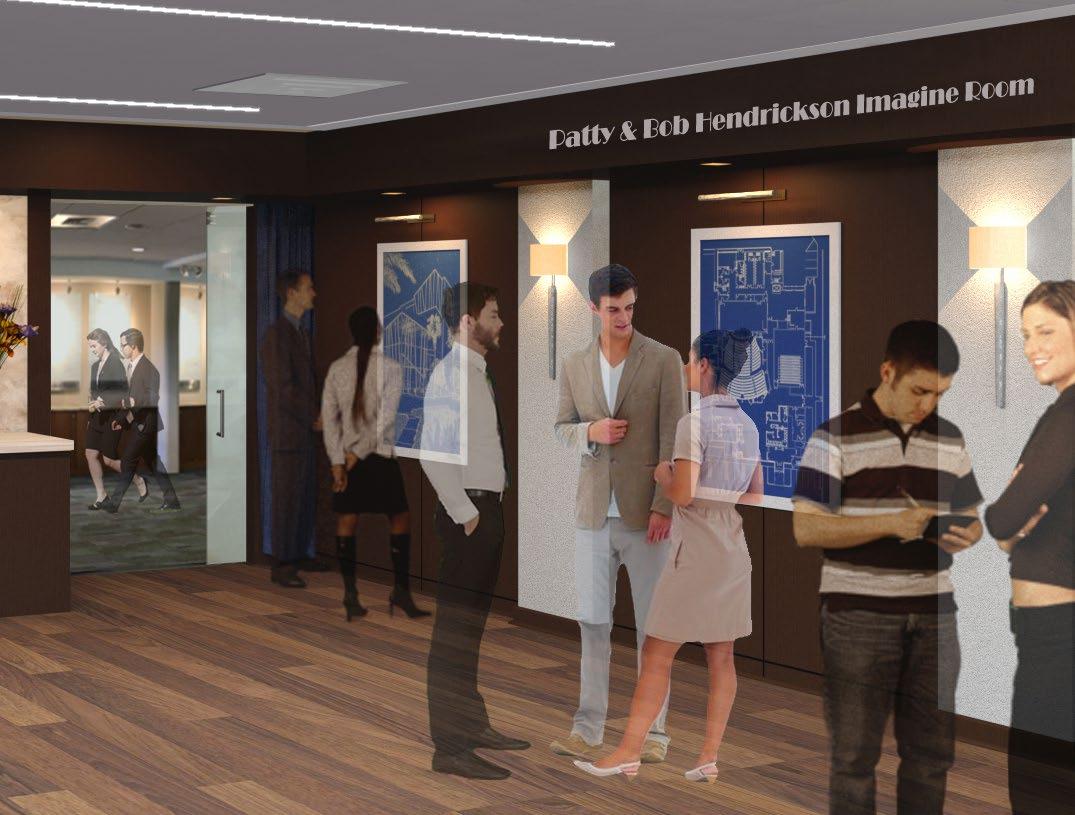
Welcome to the new and improved Patty and Bob Hendrickson Imagine Room!
We’ve been working hard this summer, pushing our (literal) boundaries to bring our patrons the most exceptional experiences at the Maltz Jupiter Theatre. Thanks to a generous gift from Patty and Bob Hendrickson, we have expanded and completely redesigned the Imagine Room.
Under the design expertise of Currie Sowards Aguila Architects, every inch of the Imagine Room has been remodeled by the John McDonald Company. The improvements are hard to miss—we added 500 square feet of space, creating an exterior entrance and a full wall of windows in the room. Interior designer Suzi Addessa and Associates have incorporated innovative cabinetry, stunning new floors, and modern fixtures that transform and reinvigorate the space. These new features allow the Imagine Room to seamlessly transition from a private lounge, a board meeting room, and an intimate event space. Altogether these improvements elevate the space, not only in terms of style, but in the level of service the Theatre can provide to guests and patrons.
The expansion of the Patty and Bob Hendrickson Imagine Room is the first project initiated as part of the Theatre’s multi-million dollar Believe Capital Campaign. The new Imagine Room is a glimpse into the future of the Maltz Jupiter Theatre as a premiere regional theatre that delivers the highest level of excellence and hospitality to its patrons.
Kelsey Peterson
Opening Night celebrations at the Theatre feature a sentimental cuisine choice.
It’s sort of like the Greek tradition of framing the first dollar bill a restaurant earns.
Only at the Maltz Jupiter Theatre, the tradition involves eating deviled eggs on Opening Night—and there’s a very special reason why.
While hard to imagine the Theatre as anything other than the flourishing regional institution it has become, things weren’t always easy.
In 2005, when the Theatre was still finding its way, the productions’ budgets were tight and there wasn’t any money to purchase food for the cast and creative teams to celebrate the opening of each show.
“The Theatre was poor, but they made do,” said Kristen Kesonen the Theatre’s Company Manager. “They went out and purchased trays of deviled eggs for each opening night because it was the only thing they could afford at the time.”
As audiences swelled and the Theatre earned a place on the national stage, the Theatre began to budget for proper celebrations for each show’s cast, crew and creative team. Today, a small celebration follows each Opening Night, complete with food, libations, music and speeches.
But one thing still remains—the trays of deviled eggs. Specially ordered for each celebration, each show’s cast now looks forward to taking a celebratory group photo of each person eating—you guessed it—a deviled egg.
“It’s a reminder of where we came from,” Kesonen said. “We’ve come so far and always want to remember that.”
Linnea Bailey

“It’s a reminder of where we came from...”

As the students of the Professional Training Program exit the Maltz Jupiter Theatre stage, they enter into a new act of their theatre careers.
This past August, the eight students of the Maltz Jupiter Theatre’s Professional Training Program were the first students from the Conservatory to complete the rigorous two-year theatre program.
Created for students pursuing a career in the performing arts, the Professional Training Program (PTP) is the only training program in Florida affiliated with a regional theater. Because of its unique combination of arts education and stage experience, the PTP students have developed talents and techniques on par with professional actors.
“By auditioning and being cast in the season’s shows at the Maltz Jupiter Theatre,” says PTP student Emily Gough, “I was able to accumulate enough points to receive my Actors’ Equity card. An Equity card is invaluable in that it makes auditions more accessible and opens up more opportunity to act on a professional level.”
After hours of strenuous training in tap, ballet, jazz, modern, acting, acting for the camera, voice, dialects, Shakespeare, music theory, stage combat, and audition prep, the graduates are quickly approaching life in the “real world.” Thankfully, their experience isn’t limited to the classroom. “The opportunity to perform as often as possible is the best way to grow,” says PTP student Nick Lovalvo. “Two years isn’t that
long to train, but when you get the opportunity to be in season shows, Conservatory shows, showcases, and cabarets, you get performance exposure that is a vital supplement to classroom time.”
Despite their professional demeanor and impressive resumes, not all of these young artists started with a background in theatre. PTP student Jevorn Henry reflects on his overall growth after the program: “I’ve grown a lot in every art form here but with acting, especially, I’ve grown the most. I didn’t really know much about it coming into the field, and now I know how to authentically apply the techniques we’ve learned to scene work and audition prep.”
Director of Education Julie Rowe is the originator of the program and had the pleasure of guiding the inaugural PTP class through their training. “Watching these eight artists grow into professionals,” says Rowe, “has truly elevated the Conservatory’s curriculum. They have pushed themselves to the next level of artistic excellence and we are extremely proud to see them move on to bigger and better things.”
Their post-graduation plans include moving to New York, Atlanta, and staying local to pursue their dreams of being on stage. Although these pupils of the theatre continue to learn, it won’t be long before we hear about their first Tony Award win or see their shining faces on the cover of the next Playbill.
Cecilia Padilla

The not-for-profit Maltz Jupiter Theatre has become one of Florida’s preeminent professional theatres, committed to production and education through its collaborations with local and national artists. Currently the state’s largest award-winning regional theatre, the Theatre draws 100,000 people annually, serves a subscription base of more than 8,000 and has world-class classroom facilities in support of its Goldner Conservatory of Performing Arts, which serves hundreds of youth and adults. The Theatre is a member of the prestigious League of Resident Theatres and has earned numerous Carbonell Awards, South Florida’s highest honor for artistic excellence, including the prestigious Bill Von Maurer Award for Theatrical Excellence.
